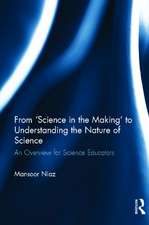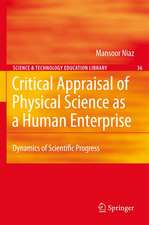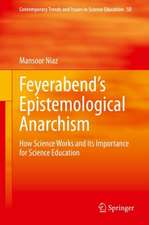Teaching General Chemistry
Autor Mansoor Niazen Limba Engleză Hardback – 29 feb 2008
Preț: 551.50 lei
Preț vechi: 750.50 lei
-27% Nou
Puncte Express: 827
Preț estimativ în valută:
105.52€ • 110.19$ • 87.14£
105.52€ • 110.19$ • 87.14£
Carte disponibilă
Livrare economică 26 martie-09 aprilie
Preluare comenzi: 021 569.72.76
Specificații
ISBN-13: 9781604561050
ISBN-10: 160456105X
Pagini: 409
Ilustrații: tables
Dimensiuni: 184 x 264 x 18 mm
Greutate: 0.56 kg
Editura: Nova Science Publishers Inc
ISBN-10: 160456105X
Pagini: 409
Ilustrații: tables
Dimensiuni: 184 x 264 x 18 mm
Greutate: 0.56 kg
Editura: Nova Science Publishers Inc
Cuprins
An introduction to the history and philosophy of science; Framework to understand conceptual change; A methodology for science instruction based on the history and philosophy of science; Understanding mole; Understanding stoichiometry: conflicts, lacunae, and perturbations; Understanding atomic structure: baroque tower on a Gothic base; Understanding gases: from 'algorithmic mode' to 'conceptual gestalt'; Understanding heat energy and temperature: How students resist conceptual change from caloric to kinetic theory?; Understanding chemical equilibrium: Facilitating conceptual change; Epistemological beliefs of students and teachers about the nature of science; Conclusions; Index.














